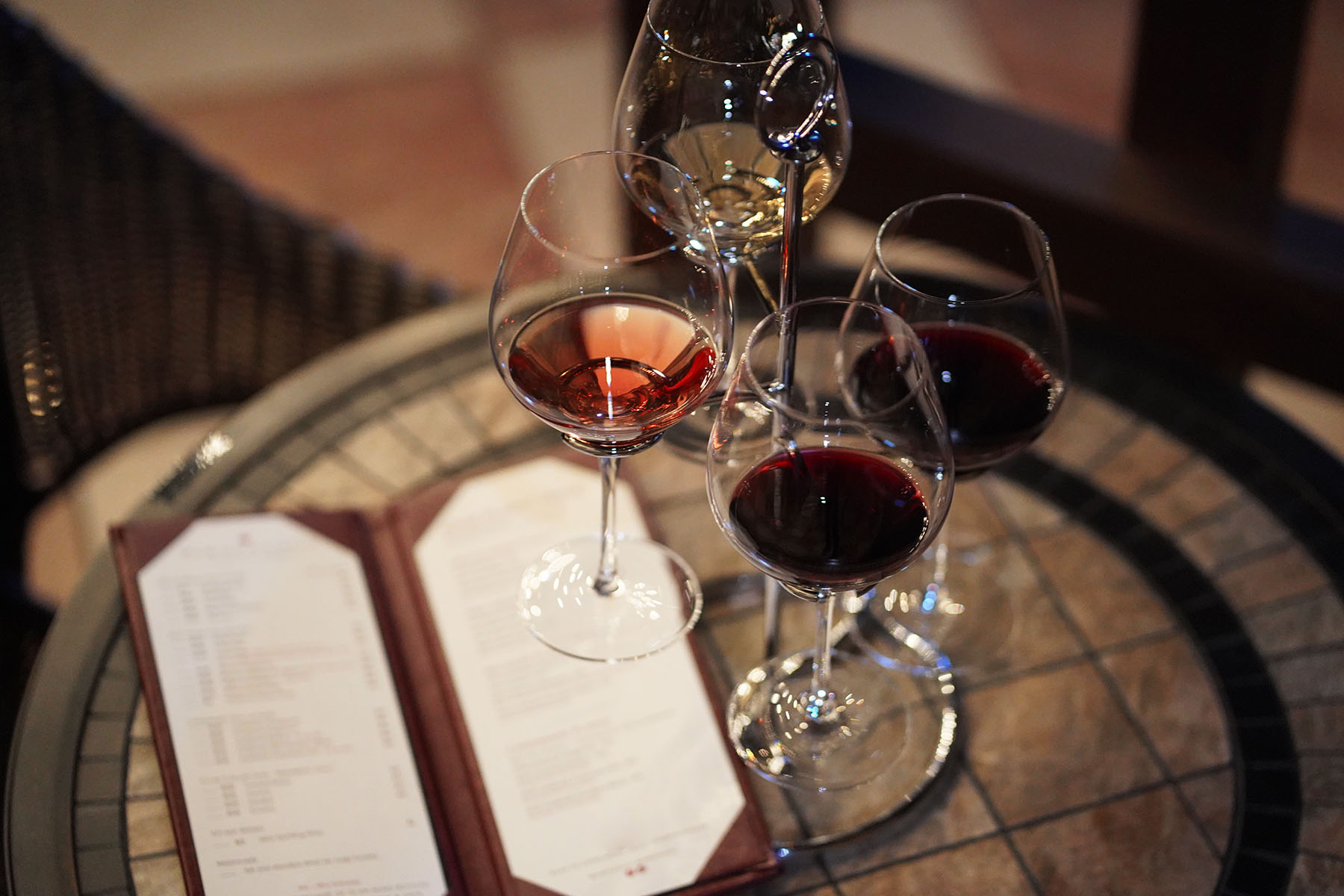Back to Basics: Tasting Tips for Drink Wine Day
 February 18th is Drink Wine Day, and it will come as no surprise that this is a holiday that we can get behind! In honor of this celebration, we are going back to basics with wine tasting tips for beginners and long-time wine lovers alike. Here at Rubino Estates, we believe in making fine wine approachable. After all, enjoying good wine doesn’t have to be complicated!
February 18th is Drink Wine Day, and it will come as no surprise that this is a holiday that we can get behind! In honor of this celebration, we are going back to basics with wine tasting tips for beginners and long-time wine lovers alike. Here at Rubino Estates, we believe in making fine wine approachable. After all, enjoying good wine doesn’t have to be complicated!
Focus on engaging your senses
Think about wine tasting as a multisensory exploration. It’s not just about the taste (though that might be our favorite part). Take a moment to consider the color, the viscosity, and the scent. For an added level of elegance, select a wine glass that accentuates these features! If you have the bottle on hand, consider the characteristics of the label and what that tells you about the winery, winemaking process, and more.
For more experienced wine lovers, consider “blind tasting,” which can involve trying a wine before learning about its varietal, origin, and vintage. Approach the wine without any assumptions--you might just learn something about your palate or discover a new favorite wine!
Taste a Gradient
If you are enjoying multiple wines, we recommend enjoying them in order from lightest to heaviest. Start with white wines, then move on to rosé, then to reds. If you’re enjoying reds only, consider factors like tannins, acid, and sweetness, all of which influence the “weight” of a wine. If you aren’t familiar with the wines you are enjoying, fear not! A palate cleanser can help balance the transition.
Grab a Bite
It’s snack time! Most foods featured on traditional charcuterie boards pair phenomenally with wine. Cured meats, cheeses, crackers, olive, and nuts make perfect companions for wine tasting, help reset the palate between wines, and are downright delicious. Don’t miss out on the endless possibilities for tastebud euphoria.
Take your time
Good wines take time, so it’s natural to take time to enjoy the wines themselves. Savor the characteristics of each wine you try, experiment with tasty combinations of cheese, meats, and more. Most of all, savor the moment of enjoying time with people you love. There is truly nothing like it!
Looking for an opportunity to put these tips to use? Visit us at the Rubino Estates tasting room to enjoy a tasting! We are open seven days a week from 11:00 a.m. to 5:30 p.m. If you want to taste at home, consider us your one-stop shop for everything you need for wine tasting. Stock up on wines, select gourmet cheeses and accoutrement from our deli, and get ready to sharpen your senses with the tastiest combinations.
A Quick Guide to Chardonnay

As one of the most widely known and recognized white wine varietals, Chardonnay has earned its fame from its approachability and golden splendor. Some sommeliers consider the quality of an establishment’s Chardonnay to be a metric for guessing the quality of the winery as a whole. This week, we’re dwelling on the history of this ubiquitous grape!
Old World Beginnings
The illustrious history of Chardonnay dates back at least as far as the Roman empire, when vines of a varietal called Gouais Blanc were brought from Croatia to mainland Europe. Gouais Blanc would eventually cross-pollinate with the French aristocracy’s Pinot Noir, from which the gorgeous golden-green of Chardonnay grapes was born. For many years, Chardonnay was grown alongside, blended with, and mistaken for Pinot Blanc. Chardonnay would not gain its own fame as a varietal until later, partially aided by the use of Chardonnay in Champagne.
New World Flair
“New World” Chardonnay has a life of its own. Some of the best Chardonnay in the world grows right here in California. In fact, the first successful planting of Chardonnay grapes in California was in the Livermore Valley, and we’re proud to continue that legacy. Chardonnay thrives in California’s valleys, where blankets of coastal fog slow the ripening of the grapes and encourage flavorful, robust fruit. Californian Chardonnay exploded in popularity after the “Judgement of Paris” in 1976, where multiple Californian wines, including a Chardonnay, beat French wines in a blind tasting. This turned the wine world upside down and brought the New World wines into an era of prestige.
Delicious Variation
Virtually anywhere wine is grown, there is Chardonnay. This widespread cultivation makes for huge variety in what the wines can offer. It is referred to as “malleable,” meaning that the taste of the wine is highly dependent on the style and work of the Winemaker, as well as terroir—the unique conditions of the place in which it was grown. When you sip a Chardonnay, some say you “taste the place.” The Winemaking process lends significant flair as well. A natural process called “malolactic fermentation” is used on some Chardonnay to create a smooth, buttery, and less acidic wine. There's a Chardonnay for everyone!
Flavor Like No Other
The use of oak barrels is the source of most of the Winemaker’s influence when crafting a Chardonnay. Some Chardonnays are fermented and aged in stainless steel, though oak lends iconic flavor and complexity. Sometimes referred to as the Winemaker’s spice rack, oak barrels, when used either for aging or for both fermentation and aging, can impart toasty flavors of vanilla, caramel, spice, cream, coconut, cinnamon, cloves, and more. After bottling, Chardonnay is delicious when young while still holding up well if aged.
